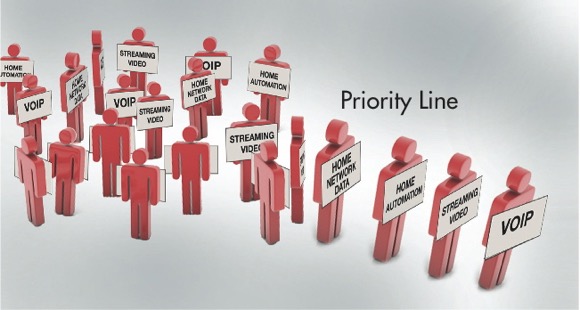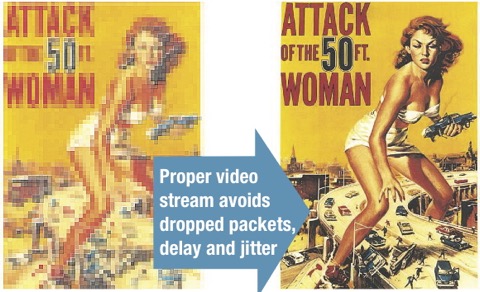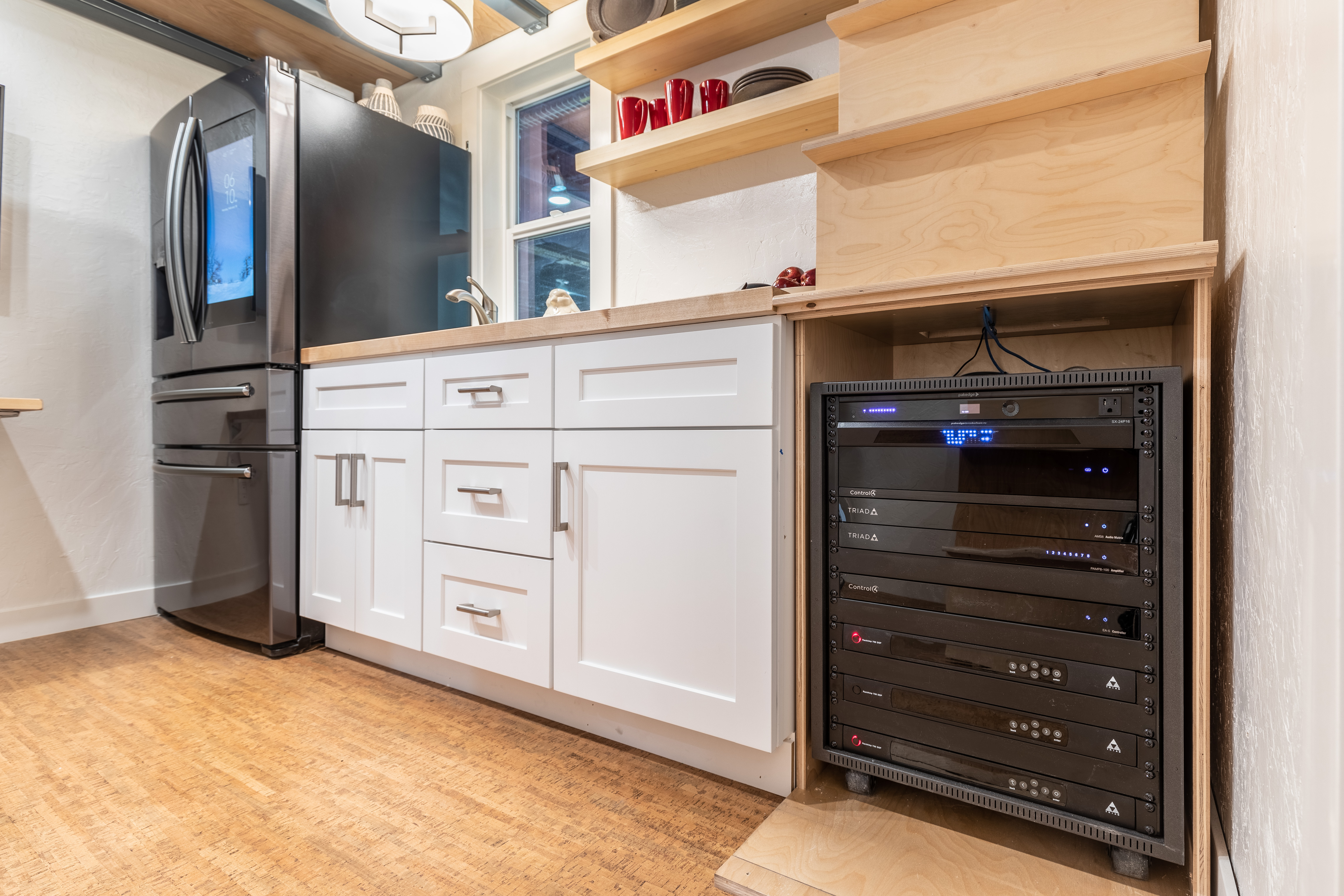
Video streaming allows immediate access to over 50,000 movie titles, an obvious sign of its huge popularity. It’s clear that movie distributors see a future in ‘digital distribution’ and are investing in it quickly. Home Media Magazine, for an example, reported that Walmart’s $100m acquisition of Vudu is a solid indication that ‘digital distribution’ is here and is becoming more viable option every day. Some of us may miss the higher quality picture of DVD and Blu-ray technology, but streaming has come a long way and the picture quality is already catching up. Plus, the irresistible convenience of digital streaming from the home is a phenomenal experience when set up properly.
Top 4 Streaming Essentials:- Use a high quality router: A top quality router will prevent many of the hazards that cause jitter, freezing, and delay.
- Check your connection speed: Ensure throughput connection is at least 1.5Mbps/ stream for SD quality and 3.0Mbps/stream for HD (or 6.0Mbps for Vudu HDX) not to mention standard internet use, VOIP and audio overhead. (http:// www.speakeasy.net/ speedtest)
- Establish Quality of Service/Experience: Group devices with similar bandwidth needs on VLANs with designated priority to maximize experience.
- Use wired network: Wifi is highly subjective in certain environments, especially during high use times like after work or on the weekends. Always use wired connections to ensure reliable data streaming.

[by Victor Pak of Pakedge Device & Software]
Imagine if the instructions for your $250 Apple TV warned, “Due to limited bandwidth, when using your new Apple TV, make sure to tell your kids to stay off the internet.” This solution, as we all know, isn’t going to fly. What makes the most sense is providing and establishing a home network that will orchestrate the flow automatically. Customers spend good money for Home Automation and don’t want to police their family over internet rations.
Furthermore, online movie streaming presents an opportunity for installers to really differentiate their service from a network that consumers can install themselves. Consumers will gladly pay for the expertise you bring with a state-of-the-art network. This means installing the right gear and familiarizing yourself with a different type of IP network: Priority networks specifically designed for streaming.
Virtually all IP networks currently installed are those where all devices, access, and priority are equal. This is what we call a ‘Best Effort’ network - every device is treated the same and has equal access to the available bandwidth. With this setup, one simply ‘hopes for the best’ with no guaranteed quality of service.
A BETTER APPROACHWhen streaming movies or other digital media, many things can happen to packets as they travel from origin to destination. Content providers work around the clock to eliminate any type of regional congestion. Neil Hunt, Chief Product Officer at Netflix, writes in their blog, “Our engineering team is working to multi-source most content, so that there are many possible alternatives in case of regional congestion... as long as the congestion isn’t in the customer’s home or last-mile infrastructure, in which case there is little we can do...” So most remaining potential streaming issues reside in either the customer’s home or the so-called “last- mile” which is the ISP to the home. An IP network, at its core, is based on sharing the same highway and sending information in small pieces, or ‘packets.’ Today’s IP network is not limited to transferring computer files; it is also tasked with Home Automation, making phone calls, and streaming movies - either internally or over the internet. Today’s networks are shared by devices that can be considered ‘Elastic’ or ‘Inelastic.’ For many integrators simply over-provisioning bandwidth or getting the fastest internet service is often not enough. You can get away with out- dated network configurations if your network consists strictly of ‘Elastic’ devices for simple downloading of files. ‘Elastic’ devices are those where user satisfaction does not change as the bandwidth gets smaller. However, segmenting the network and giving certain devices higher priority, and thus a better chance for success, would be a better way to go. This is especially true with ‘Inelastic’ devices, which need a certain amount of guaranteed bandwidth to work. ‘Best Effort’ won’t cut it for Inelastic devices because they require a constant or fixed bit rate and low latency to avoid freezing, jitters, and delay. To explore this, let’s look at a short list of hazards present in digital communication:
Circuitous routes, long distances, and congestion often scramble packets into the wrong order or delay delivery altogether. This leads to incorrect queuing at the router or rendering device. Content providers like Netflix work hard to avoid delays and congestion by establishing content servers in many different locations. This still leaves the ‘last-mile’ infrastructure, or the ISP’s service, out of their control. If not handled properly at either the router or rendering device, the resulting audio and video quality can be disturbed. Good quality networking equipment will minimize these risks.

If the memory is already full, some packets might get ‘dropped’ by the router resulting in undelivered information. This can also happen if the router can’t process the information fast enough. Packets can also be altered or misdirected after leaving the sender. If the information gets marred or dropped, the receiving Vudu box might request a retransmission, which spells the end of your Box Office Thriller experience. A top grade router will help eliminate this risk.
Dropped and error packets are rare in wired networks but commonplace in wireless networks due to the presence of unpredictable environmental factors. When rated at the same speed, a wired network will be much more reliable than a wireless one because it does not spend time resending packets. Due to this phenomenon, it’s a bad idea to promise high quality wireless video streaming unless you’ve set it up well below the wireless capacity and range. A lot of manufacturers throw around the term ‘QoS’ or Quality of Service. The term, however, remains undefined and the method for achieving it is not standardized. Rather than Quality of Service, I like to call it “Quality of Experience”: a device’s perceived performance and the degree of user satisfaction. In other words, the ‘QoE’ is the number of happy customers.
To ensure the best possible experience, we need to test the connection from the ISP to the home and the home network itself at different times during the day. For video streaming, the ‘last mile’ connection must be of a certain speed. Most streaming providers provide content in proprietary compressed format and recommend speeds of at least 1.5Mbps for SD quality, 3.0Mbps for HD, or 6.0Mbps for Vudu’s HDX. Again, these can be quality-checked on Speakeasy (www.speakeasy. net/speedtest).
VLANs AND PRIORITY ARE THE KEY
Inside the home network, the approach should be to separate the network by VLANs overlaid with priority assignments for each VLAN. One way to segment VLANs is by grouping according to type of device function: “Which devices can be grouped into each VLAN so as to ensure the best user experience?” One way to segment is by designating one VLAN as ‘low’ priority for computers. The VLAN for home controls could be assigned ‘medium.’ The ‘highest’ priority can be given to audio and video streaming devices which require the most bandwidth. In response to these VLAN markings, routers and switches along the network will use various queuing strategies to tailor performance and prioritize packets accordingly. There are various approaches to setting priority but the most common technique used to support QoS is ‘traffic shaping’ or ‘rate limiting’. This is where the amount of packets a device can send will be limited or reduced while other devices will have no restrictions. This method functions like a window that’s fully opened for some devices, half way for some, and only slightly open for others.
Using the above tools to install priority networks can help get you get established in offering top quality movie streaming systems. Despite exciting advancements on the broadband front, like Verizon FiOS and AT&T’s U-verse, amazing products can still be stymied by a ‘Best Effort’ home network. Online movie streaming has arrived and is only going to improve in quality. Vudu, Netflix, and all the other distributors can only bring their product so far. Inside the home is where custom integrators bring their streaming expertise to bear. Installers make all the difference between a ‘low budget flick’ and a Box Office Smash Hit experience. Making sure our custom networks can meet the challenge should be our top priority.
Tags: Video Streaming, Audio Streaming, Home Networks, VLAN






